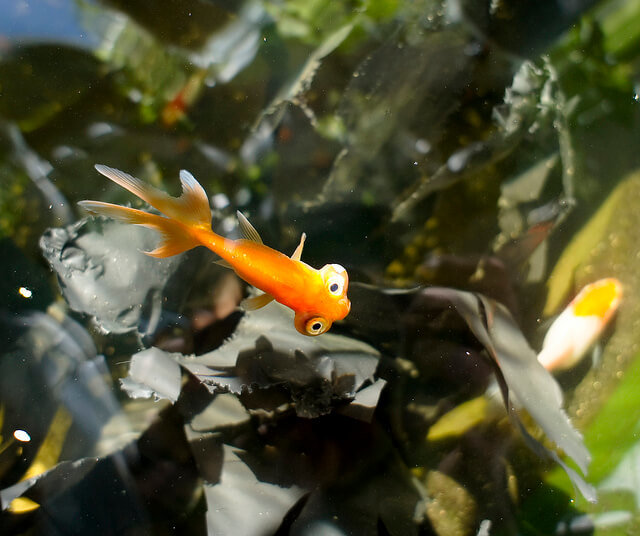The celestial goldfish is a captivating and delicate fancy breed that requires special care to thrive. In this comprehensive guide, we will explore the unique characteristics of celestial goldfish and provide valuable insights on how to ensure their well-being and create an ideal environment for these enchanting aquatic companions.

Unique Features of Celestial Goldfish
The celestial goldfish stands out with its distinctive upward-facing eyes, giving it a celestial or stargazing appearance. This unique trait makes it particularly important to provide the right tank setup to avoid any harm to their delicate eyes. Celestial goldfish lack a dorsal fin, and as they swim, they push their heads downward to maintain a forward view, resulting in an elegant upward lift of their body and caudal fins. Their slow swimming speed necessitates a calm tank environment without strong water currents.
Care Tips
Creating a suitable habitat is crucial for the well-being of celestial goldfish. Consider the following factors when setting up their tank:
Tank Size
Provide ample space for celestial goldfish to swim and explore. A minimum tank size of 20 gallons is recommended for a single celestial goldfish, with additional space for each additional fish.
Decorations and Substrate
Avoid sharp-edged decorations or abrasive substrates that could potentially harm the delicate eyes of celestial goldfish. Smooth, rounded decorations and soft substrates such as fine sand or smooth gravel are ideal choices.
Lighting
Celestial goldfish are always looking upward while at rest, so it is important to provide subdued lighting in the tank. Avoid bright lights that may cause discomfort or stress to their eyes. Natural or low-wattage aquarium lights are recommended.
Filtration and Water Flow
Choose a gentle filtration system that provides adequate water quality without creating a strong water current. Celestial goldfish are delicate and can easily become stressed or injured in a high-flow environment. Consider sponge filters or adjustable flow filters to maintain a calm and suitable water flow.
Tank Mates and Compatibility
Celestial goldfish are best kept with other compatible and slow-swimming goldfish breeds. Ideal tank mates include other celestial goldfish, bubble eyes, pompons, and telescopes. Avoid introducing fast-swimming or aggressive species that may outcompete or cause stress to the celestial goldfish. Keep in mind that celestial goldfish prefer the company of their own kind.
Water Temperature and Maintenance
Maintaining proper water temperature is essential for the health and well-being of celestial goldfish. They thrive in temperatures ranging from 70-80°F (21-27°C). Use a reliable aquarium thermometer to monitor the water temperature regularly and make necessary adjustments to maintain the optimal range. Perform regular water changes to maintain water quality and remove accumulated waste.
Diet and Nutrition
Offer a balanced and nutritious diet to promote the health and vibrant colors of your celestial goldfish. High-quality goldfish pellets or flakes are a good staple food. Supplement their diet with occasional treats such as freeze-dried or frozen foods like bloodworms or brine shrimp. Avoid overfeeding and monitor their intake to prevent digestive issues and obesity.
Conclusion
Caring for celestial goldfish requires attention to their unique physical characteristics and specific environmental needs. By creating an appropriate tank setup, selecting compatible tank mates, maintaining proper water conditions, and providing a balanced diet, you can ensure the well-being and longevity of these delicate and enchanting aquatic companions. The celestial goldfish’s celestial gaze will undoubtedly bring a touch of wonder and serenity to your home aquarium.
Sources:
- Alderton, D. (2008). Goldfish: A Complete Introduction. Firefly Books.
- Stoskopf, M. (1993). Goldfish Varieties and Genetics: A Handbook for Breeders. T.F.H. Publications.
Reviewed By: Tim Winter

Tim Winter has a strong affection for pets and wildlife. His years of experience caring for various types of pets has led him to share his knowledge with others on the best practices in pet care. Tim holds a Bachelor of Science from the University of Oregon School of Journalism and Communications.
